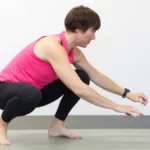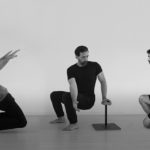Most strength training teaches your muscles to work harder.
Skill-based training teaches your muscles to work smarter, and the difference shows up every time you need to move in ways your workout didn’t prepare you for.
When you train for skills instead of just strength, you’re not only building muscle—you’re teaching your body how to coordinate that strength for real-world situations. So you get stronger while becoming more adaptable, resilient, and confident in unpredictable movements.
Whether you’re navigating uneven ground on a hike, helping someone move furniture, or just getting up off the floor gracefully, skill-based training prepares your body to handle whatever life throws at you.
Here’s why this approach works better than traditional muscle-focused training, and how to start incorporating it into your routine.
What Makes Skill Training Different (And Why It Works So Well)
Traditional strength training builds individual muscles. Skill training builds your ability to use those muscles together when it actually matters.
The difference shows up in real life: you might deadlift 300 pounds but struggle to pick up an awkward box from the floor, or bench press your body weight but feel unsteady helping someone move furniture.
Note: We’re not saying that strength training is bad. We’re saying that strength-ONLY training is a wasted opportunity.
That’s because skill training does something conventional workouts miss. It teaches your body to coordinate strength, balance, and control in unpredictable situations. Instead of just making your muscles stronger, it makes your entire body work better.
And isn’t that really the point? To be more “fit,” physically?
This approach also engages your brain more fully. Rather than zoning out through repetitive sets, you’re actively learning and problem-solving with your body. The result is training that’s more interesting, more functional, and more sustainable than grinding through the same exercises week after week.
View this post on Instagram
Here’s Why Your Routine Needs to Build Both Strength AND Skill
Skill training gives you something traditional workouts can’t: confidence that your body will handle whatever you ask it to do.
Instead of building strength in isolation, you develop the kind of full-body coordination that transfers to real life—hiking uneven trails, carrying awkward loads, or simply moving through your day without second-guessing your body’s capabilities.
There’s also a motivational advantage. Working toward specific movement skills (like getting up off the floor without using your hands) is inherently more engaging than just adding weight to the bar. You’re not just getting stronger—you’re getting more capable, and you can feel the difference immediately.
This approach keeps you training consistently because the progress is obvious and meaningful. Each session builds toward something you actually want to be able to do.
How to Add Skill Training to Your Routine (3 Simple Strategies)
The easiest way to start is by adding skill work to your existing workouts rather than creating separate sessions. Here are three approaches that work:
1. Skills First (10 Minutes Max)
Start your workout with 10 minutes of skill practice while you’re mentally and physically fresh. Choose movements that challenge you but don’t exhaust you—you still have your main workout ahead.
This timing gives you the best learning conditions and ensures skill work actually happens instead of getting skipped when you’re tired at the end.
2. Match Your Energy, Not Your Body Parts
Don’t just add handstands to “upper body day.” Instead, think about what kind of energy your main workout demands.
If you’re doing intense cardio intervals, try some upper body balance work beforehand as a counterbalance. If you’re rowing for distance, practice some explosive coordination skills first. The goal is expanding the breadth of your training, not just piling on more of the same stimulus.
3. Use Skills as Your Backup Plan
When you’re not feeling your scheduled workout—whether you’re beat up, unmotivated, or just off—skill training makes an excellent substitute.
It’s not necessarily easier, but the different energy emphasis can re-engage you when traditional training feels like a grind. This flexibility prevents burnout and keeps you moving consistently.
The key advantage: skill training adapts to how you feel each day, making it easier to maintain long-term consistency.
Making Skill Training Stick: The Smart Practice Approach
The difference between people who make progress and those who get frustrated comes down to how they practice, not how much.
Start slow, then let speed happen naturally. Focus on doing movements correctly at a comfortable pace. As your coordination improves, speed follows automatically. Forcing it just ingrains sloppy patterns you’ll have to unlearn later.
Practice challenging skills between easier ones. If you’re struggling with a particular movement, “sandwich” it between skills you’re already comfortable with. This keeps frustration low while giving you more repetitions on the hard stuff—exactly what you need to improve.
Consistency beats intensity every time. Better to practice for 10 minutes regularly than attempt hour-long skill sessions sporadically. This approach builds habits while avoiding the perfectionism trap that kills motivation.
The key insight: skill development happens through smart repetition, not exhaustive sessions. When you structure practice this way, you make steady progress without burning out.






